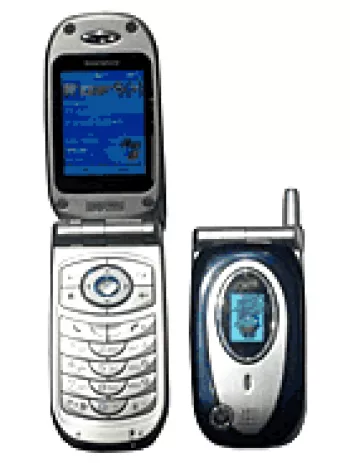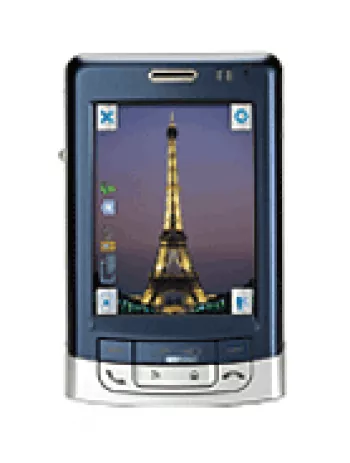
Overview of the Mitac MIO 8860
The Mitac MIO 8860 is a mobile device that, while initially promising in its feature set for its time, was ultimately cancelled before it could make a significant impact on the consumer electronics market. Announced in the first quarter of 2004, the device featured some innovative elements that reflected the transitional phase of mobile technology during that period.
Network Capabilities
The MIO 8860 was designed to operate on GSM networks, supporting the 900, 1800, and 1900 MHz bands. This would have allowed the device to function in various regions across the globe, facilitating international usage, which was a valuable feature for mobile phones during that time. The inclusion of GPRS Class 10 further underlined its capability for basic mobile internet functions, a progressive feature for its era.
Launch and Availability
Despite its promising specifications, the Mitac MIO 8860 was cancelled before it could reach consumers. Announced in early 2004, it demonstrates the competitive and fast-evolving nature of the technology market, where not all announced devices successfully make it to production and retail.
Design and Build
The device was built to accommodate a Mini-SIM, aligning with the standard practices of the time. While exact dimensions and weight were not specified, it was expected to be relatively compact, fitting neatly into the category of early smartphones designed for enhanced portability and ease of use.
Display
The MIO 8860 sported a 2.2-inch TFT display capable of displaying 256K colors, though effectively using 65K colors. This 176 x 220 pixels resolution screen offered a pixel density of approximately 128 ppi, reflecting a modest display capability suitable for typical applications and basic media viewing of the time.
Platform and Performance
Operating on the Microsoft Smartphone 2003 OS, the MIO 8860 was powered by an Intel XScale 200 MHz CPU. This combination reflected the synergy between Microsoft’s early mobile operating systems and Intel’s push into mobile processors, aiming to provide a balanced performance for users seeking to experience mobile computing features.
Memory and Storage
The device supported external memory through MMC/SD card slots, offering flexibility in expanding storage capacity which was particularly useful given the limited onboard memory typical of the time. This feature would have allowed users to store more data directly on their devices, a critical consideration for early adopters of smartphones.
Camera Capabilities
With a single CIF camera, capable of capturing basic images, the MIO 8860 wasn’t designed for high-quality photography. This choice represents the stage of mobile camera evolution, where such features were just beginning to see important innovations. The device lacked any video recording capability which was common in many early mobile devices.
Sound and Alerts
The sound system of the Mitac MIO 8860 was notably basic, lacking a loudspeaker and a 3.5mm audio jack. However, it supported vibration alerts and polyphonic (64-tone) ringtones, which were popular at the time for personalizing mobile devices with distinct sounds.
Communication and Connectivity
The device had limited connectivity features by today’s standards, lacking Bluetooth, WLAN, and GPS. It did, however, include an infrared port which was useful for sharing contacts and data with compatible devices. Additionally, a proprietary USB connection was available for wired data exchange with computers.
Software Features
Equipped with a WAP browser, the MIO 8860 allowed basic web browsing, reflecting the early stages of mobile internet use. The lack of advanced sensors and system utilities indicates the developmental stage of smartphone user interfaces and applications during its time.
Battery and Power Management
Powered by a removable Lithium-Ion battery with a capacity of 850mAh, the device’s power system was typical for the time, allowing users the flexibility to swap out batteries as needed. This feature was particularly beneficial for heavy users who needed dependable uptime throughout their busy days.
Conclusion
While the Mitac MIO 8860 was ultimately cancelled and never reached store shelves, it presents an interesting snapshot of the challenges and opportunities in the early 2000s mobile technology landscape. Its ambitious feature set, coupled with the realities of technological and market limitations, underline the learning curve that manufacturers faced in the burgeoning smartphone sector.
Key Features of Mitac MIO 8860
- Supports GSM network technology with 2G bands (GSM 900 / 1800 / 1900).
- Supports GPRS Class 10 for data connectivity.
- Compact display with a 2.2-inch TFT screen showing 256K colors.
- Runs on Microsoft Smartphone 2003 operating system.
- Powered by an Intel XScale 200 MHz CPU.
- Expandable memory via MMC/SD card slot.
- Includes infrared port for connectivity.
- Equipped with a removable Li-Ion battery for power.
Disadvantages of Mitac MIO 8860
- Device was announced but later cancelled, not available on market.
- Display resolution of 176 x 220 pixels with ~128 ppi density might offer limited clarity.
- Runs on outdated Microsoft Smartphone 2003 OS.
- Low-performance Intel XScale 200 MHz CPU.
- Lacks advanced camera features; only a single CIF camera is available and no video capability.
- No loudspeaker capability.
- No 3.5mm headphone jack available for audio output.
- Communications features are limited: no Bluetooth, no WLAN, no GPS positioning, and no radio functionality.
- Relies on a proprietary USB for connectivity, limiting compatibility with other devices.
- Lack of EDGE technology for faster data connectivity.
View Also
More Phones
All Rights Reserved +13666 Phones © Mobilawy 2025
























